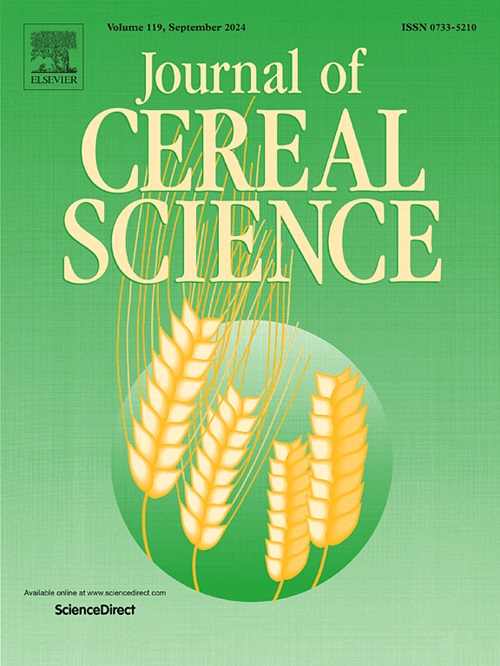Starch properties of field-grown malting barley under variable weather: Interpreting results in light of controlled-environment studies
IF 3.7
2区 农林科学
Q2 FOOD SCIENCE & TECHNOLOGY
引用次数: 0
Abstract
In this study, six malting barley varieties were cultivated under seven different environmental field conditions in 2022 and 2023. Temperature and precipitation data before and during kernel development were recorded and correlated with measured starch properties like gelatinization behavior (DSC) and starch granule size distribution/B-granule proportion (laser diffraction). The results were used to evaluate the extent to which previous findings from controlled-environment experiments are transferable to real-world field cultivation, focusing on the impact of (i) drought, (ii) temperature during kernel development, (iii) pre-anthesis temperature, and (iv) the variety-dependency of resulting starch properties.
As found in previous controlled-environment studies, field data could not confirm a starch granule size reducing effect of drought on malting barley. High temperatures during kernel development, particularly nighttime temperatures, significantly influenced starch gelatinization behavior by correlating positively with T0 (0.493) and TP (0.486). Pre-anthesis temperature negatively correlated with starch granule size (up to −0.699 for Dx50) and starch transition enthalpy (up to −0.543), partially supporting controlled-environment findings. Starch gelatinization properties showed variety-specific responses to environmental conditions, highlighting breeding potential for climate-resilient barley. This study establishes the basis for predicting starch properties based on weather data and specifically emphasizes the critical role of nighttime temperatures during kernel development in influencing gelatinization behavior.
可变天气条件下大田种植麦芽的淀粉特性:根据受控环境研究解释结果
本研究于2022年和2023年在7种不同的大田环境条件下栽培6个麦芽品种。记录了籽粒发育前后的温度和降水数据,并将其与测定的淀粉性质(如糊化行为(DSC)和淀粉粒度分布/ b粒比(激光衍射))相关联。这些结果被用来评估之前受控环境实验的发现在多大程度上可转移到现实世界的田间栽培,重点关注(i)干旱的影响,(ii)籽粒发育期间的温度,(iii)开花前的温度,以及(iv)淀粉特性的品种依赖性。正如在以往的受控环境研究中发现的那样,田间数据不能证实干旱对麦芽淀粉颗粒大小的降低作用。籽粒发育过程中的高温,尤其是夜间温度,显著影响淀粉糊化行为,与T0(0.493)和TP(0.486)呈正相关。开花前温度与淀粉颗粒大小(Dx50为- 0.699)和淀粉转化焓(高达- 0.543)呈负相关,部分支持受控环境的研究结果。淀粉糊化特性显示出品种对环境条件的特异性响应,突出了气候适应型大麦的育种潜力。本研究为基于天气数据预测淀粉性质奠定了基础,并特别强调了籽粒发育过程中夜间温度对糊化行为的影响。
本文章由计算机程序翻译,如有差异,请以英文原文为准。
求助全文
约1分钟内获得全文
求助全文
来源期刊

Journal of Cereal Science
工程技术-食品科技
CiteScore
7.80
自引率
2.60%
发文量
163
审稿时长
38 days
期刊介绍:
The Journal of Cereal Science was established in 1983 to provide an International forum for the publication of original research papers of high standing covering all aspects of cereal science related to the functional and nutritional quality of cereal grains (true cereals - members of the Poaceae family and starchy pseudocereals - members of the Amaranthaceae, Chenopodiaceae and Polygonaceae families) and their products, in relation to the cereals used. The journal also publishes concise and critical review articles appraising the status and future directions of specific areas of cereal science and short communications that present news of important advances in research. The journal aims at topicality and at providing comprehensive coverage of progress in the field.
 求助内容:
求助内容: 应助结果提醒方式:
应助结果提醒方式:


